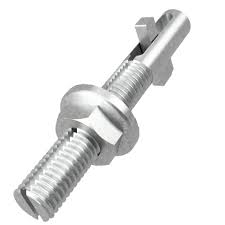The difference according to the thesaurus is that there is no major difference between bolts and screws, they are regarded as synonyms of each other. But fixing on the other hand is somewhat different, it is basically the component that fits over the end of the bolt and helps it hold objects together. While it would be pretty convenient to lump all these hardware accessories like bolt, screw and fixing together, it would make the job much simpler), there are actually significant figures which users need to be aware of before making a purchase.
It is fairly true that, to the naked eye, there does not appear to be much difference between a bolt, a screw and a fixing. They are both threaded fixings and have a head for tightening the fastener but there is more to it than that.
The most obvious way of differentiating between a bolt, a screw and a fixing is that a bolt is not usually threaded all the way along its shank as it has a plain portion. A screw, however, is treaded fully to the head. And a fixing tightens any objects at its own place.
Allow us to give you a brief about each fastener in detail.
SCREW
A screw is usually installed into a tapped hole unless it is a self-tapping screw which creates its own record. Screws don’t need nuts, as they become secure by being tightened into the hole with a screwdriver or driver bit which fits into the drive recess. Generally stated, screws are shorter than the width of the material they are being screwed into so that they don’t protrude onto the other side.
 BOLTS
BOLTS
Bolts are designed to be installed with a suitable nut. The hole for a bolt is not tapped as the bolt is pushed through an s fixed and tightened using a nut at the back of the material being fastened. So a bolt will be longer than the width of the material it is being used on, as it needs to protrude through to the other side to screw into the nut. The unthreaded portion of the bolt adds strength, making it more resistant to shear forces, compared to fully threaded screws. Bolts are usually fastened using a spanner or other tool which grips the head whilst the nut is tightened.
Bolts can also be used in the same way as screws though if they are installed into threaded components.
 FIXINGS
FIXINGS
When is a fix not a fix? When it’s a fastener? Well not really, sometimes they can be one and the same thing. The best definition of fixing is the act of holding and securing an object in place.
It describes a system for holding and securing components together in one place. For example, where a joist is nailed into a joist hanger with additional lateral restraint straps, the “fixings’ ‘ represents the complete system of straps, connectors, etc, whereas the fastener here would be the nails.
 While many times people assume no difference between a bolt, a screw and a fixing, that difference exists. it’s just that all of them connect with each other and work as a whole. For example, if the fixing is permanent, and not requiring removal, then a shear bolt might be useful.
While many times people assume no difference between a bolt, a screw and a fixing, that difference exists. it’s just that all of them connect with each other and work as a whole. For example, if the fixing is permanent, and not requiring removal, then a shear bolt might be useful.
QUALITY FASTENERS FROM FASTENER EXPERTS.
At ROYAL HARDWARE, you will find a diverse stick of high-quality industrial fasteners. Our company is at the top of the top industrial fastener manufacturers in Karachi. Apart from offering high-quality and durable types of fasteners, our customer care services are top-notch. You can chat with us through our contact forms and get a reply within just 2 to 3 working hours, or you can mail us directly at info@royalhardware.com.pk.
For further information and queries about bolt, screw and fixing, visit our website https://royalhardware.com.pk/ now.
